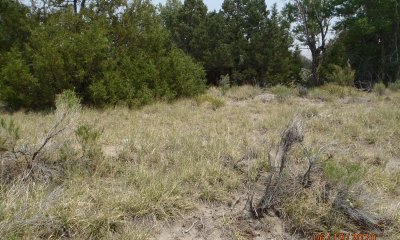
Foothill Sand 9-12 PZ
Scenario model
Current ecosystem state
Select a state
Management practices/drivers
Select a transition or restoration pathway
- Transition T1B More details
- Restoration pathway R2A More details
-
No transition or restoration pathway between the selected states has been described
Target ecosystem state
Select a state
Description
The reference state is mostly grasses with a few forbs, shrubs, and trees. As the site grades towards the sandier areas, shrubs increase. As the site grades toward the colluvial apron of the Sangre de Cristo Range, pinyon and juniper increase. Major grasses include Scribner needlegrass, needle-and-thread, Indian ricegrass, and blue grama.
Resilience management
The reference community phase has the greatest resilience to disturbance. A diversity of root systems from deep tap roots to abundant fibrous hold the soil in place and take advantage of moisture and nutrients throughout the profile.
Submodel
Mechanism
A major long-term driver is repetitive, high utilization without rest or recovery of plant species throughout the growing season for multiple years, or during drought, which has caused die-off of preferred grasses, forbs, and shrubs. As more plants die, bare ground increases and overall ecosystem function and health decrease to a degree that the site crosses a threshold.
Model keys
Briefcase
Add ecological sites and Major Land Resource Areas to your briefcase by clicking on the briefcase (![]() ) icon wherever it occurs. Drag and drop items to reorder. Cookies are used to store briefcase items between browsing sessions. Because of this, the number of items that can be added to your briefcase is limited, and briefcase items added on one device and browser cannot be accessed from another device or browser. Users who do not wish to place cookies on their devices should not use the briefcase tool. Briefcase cookies serve no other purpose than described here and are deleted whenever browsing history is cleared.
) icon wherever it occurs. Drag and drop items to reorder. Cookies are used to store briefcase items between browsing sessions. Because of this, the number of items that can be added to your briefcase is limited, and briefcase items added on one device and browser cannot be accessed from another device or browser. Users who do not wish to place cookies on their devices should not use the briefcase tool. Briefcase cookies serve no other purpose than described here and are deleted whenever browsing history is cleared.
Ecological sites
Major Land Resource Areas
The Ecosystem Dynamics Interpretive Tool is an information system framework developed by the USDA-ARS Jornada Experimental Range, USDA Natural Resources Conservation Service, and New Mexico State University.


